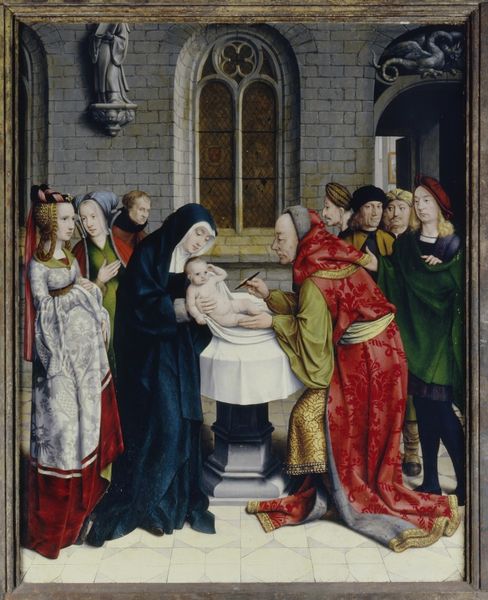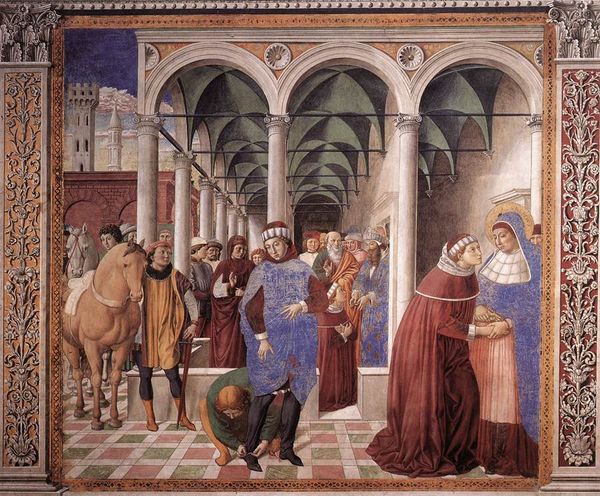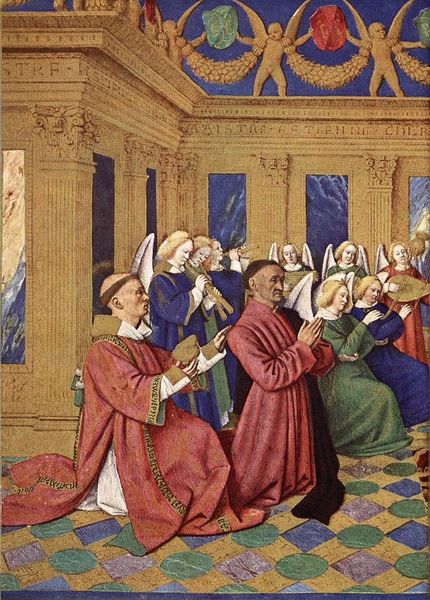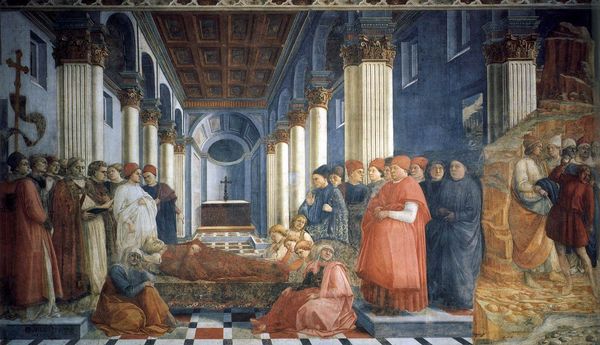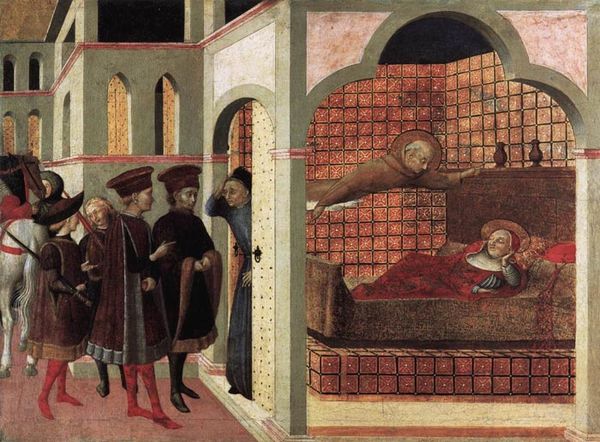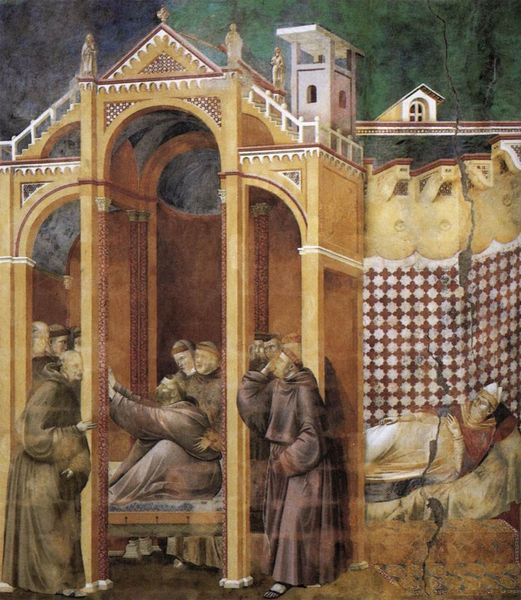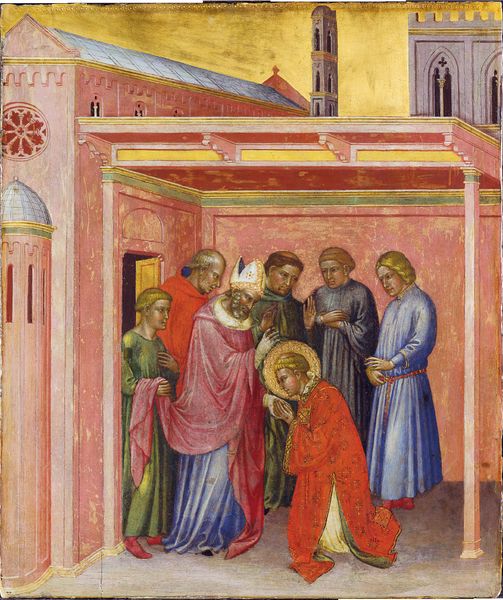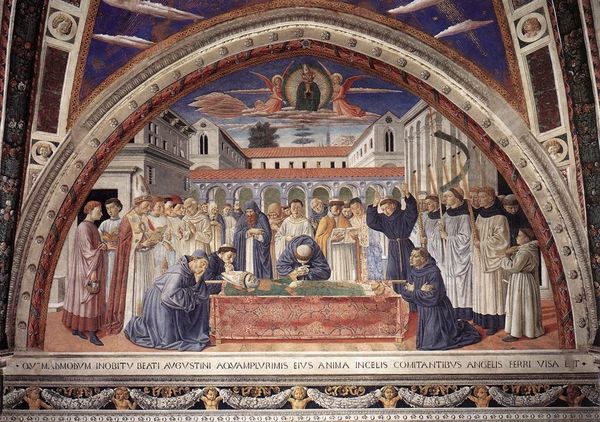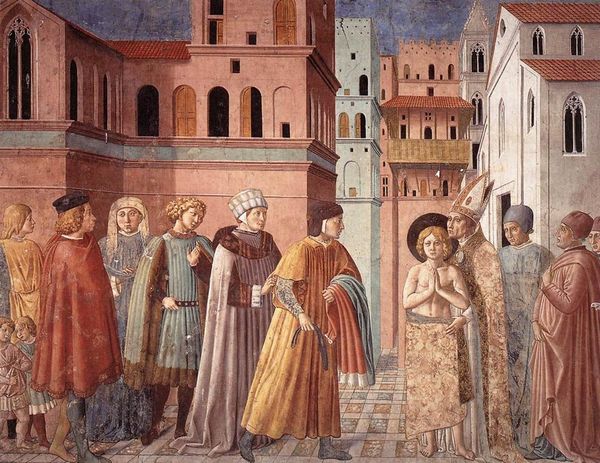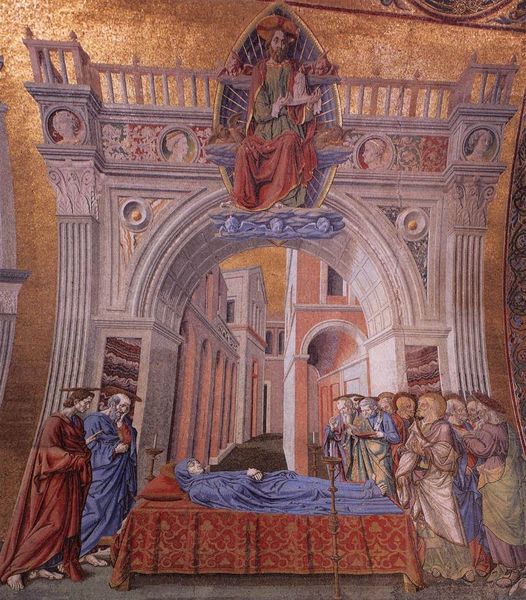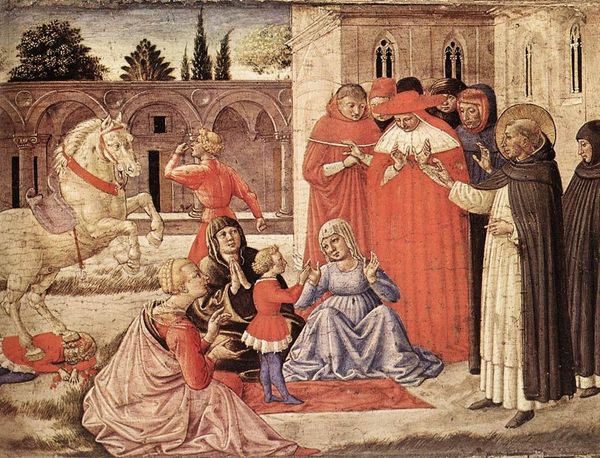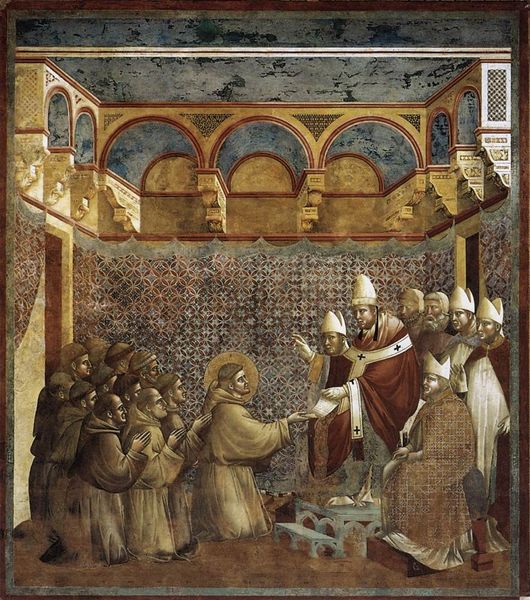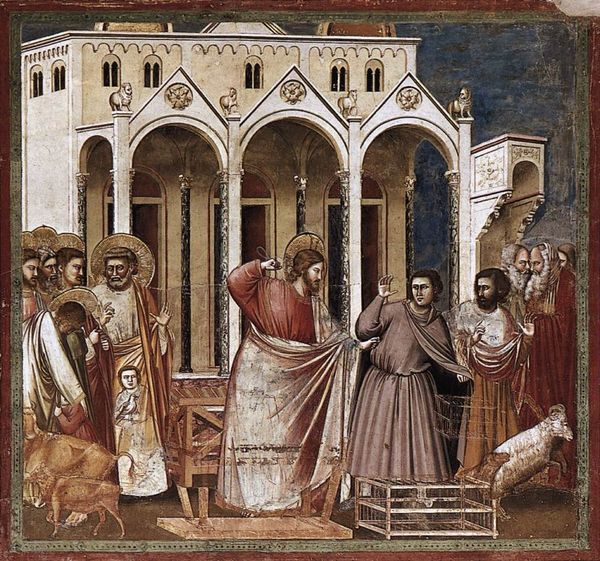
tempera, painting, fresco
#
portrait
#
medieval
#
narrative-art
#
tempera
#
painting
#
holy-places
#
figuration
#
fresco
#
oil painting
#
abstraction
#
christianity
#
history-painting
#
facial portrait
#
academic-art
#
italian-renaissance
#
portrait art
Copyright: Public domain
Curator: Isn't it fascinating? We're looking at "The Baptism of St. Augustine," a fresco created around 1465 by Benozzo Gozzoli, nestled in the Sant'Agostino Church in San Gimignano. Editor: Immediately, the colors strike me. Everything feels so warm, almost…earthy? And yet there's a certain formality in how everyone is arranged. A somber formality, maybe. Curator: Absolutely. Gozzoli was a master of narrative, capturing a moment rich with religious significance and public meaning. The Italian Renaissance was as much about public spectacle as private piety. Editor: That architectural backdrop is impressive, though. Almost theatrical! All those perfect little columns...Is that a stage set, or a symbolic temple? Curator: A bit of both, I'd wager! Gozzoli places Augustine, the future saint, squarely within a classical, idealized architectural framework. Think of it as civic and religious authority reinforcing one another in paint. That text above is "Te Deum Laudamus", We Praise Thee Oh God. Editor: Oh! The power of architecture to shape the message, the ritual and even identity… I also find the almost shy gestures interesting - there’s this wonderful gentle tenderness being conveyed at the precise moment of ritual. That tilt of the head, the offered water... it’s all rather quiet. Curator: Indeed. It's quite captivating to consider how, through visual cues like gestures and architectural settings, Gozzoli constructed and projected religious authority in the context of 15th century Italian society. How the religious become entangled in everyday existence. Editor: And also what the role of these visual narratives played for a public mostly unable to read, or question these visual cues. The work of art then becomes something more: an ideogram, and a mnemonic device. Curator: That’s a very astute point: a painted sermon that lingers in the collective imagination. It prompts us to ask how such frescoes worked within and helped reinforce community values. Editor: Absolutely, It truly provides food for thought about the connection between religious art and its broader role in Italian Renaissance civic life. Curator: Indeed - let’s allow that to sit as we journey on.
Comments
No comments
Be the first to comment and join the conversation on the ultimate creative platform.
